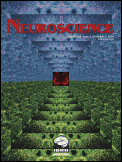 Agonism of the endocannabinoid system modulates binge-like alcohol intake in male C57BL/6J mice: involvement of the posterior ventral tegmental area.
Agonism of the endocannabinoid system modulates binge-like alcohol intake in male C57BL/6J mice: involvement of the posterior ventral tegmental area.Neuroscience Volume 164, Issue 2, 1 December 2009, Pages 424-434
Recent studies have indicated a role for the endocannabinoid system in the behavioral and physiological effects of alcohol (ethanol), particularly ethanol seeking behaviors. However, its role in modulating binge-like intake and/or the mechanism by which it may exert these effects remain poorly understood.
The current study used a newly developed strain-specific animal model of binge drinking, dubbed ‘Drinking In the Dark’ (DID), to determine if facilitation of the endocannabinoid system with the synthetic cannabinoid agonist WIN 55-212,2 (WIN) modulates binge-like ethanol intake in male C57BL/6J (B6) mice.
Based on the results of these systemic (i.p.) manipulations, and evidence in support of the involvement of subregions of the Ventral Tegmental Area (VTA) in governing self-administration of ethanol (Rodd-Henricks et al., (2000) Psychopharmacology (Berl) 149(3):217–224) as well as binge-like intake using the DID model (Moore & Boehm, (2009 Behav Neurosci 123(3):555–563), we extended these findings to evaluate the role of the endocannabinoid system within the anterior and posterior sub regions of the VTA using site-specific microinjections.
Consistent with previous research, the lowest systemic dose of WIN (0.5 mg/kg) significantly increased ethanol intake in the first 30 minutes of access whereas the two highest doses (1 and 2 mg/kg) decreased ethanol intake within this time interval. Intra-posterior ventral tegmental area (pVTA) (but not aVTA (anterior ventral tegmental area) microinjections elicited time-dependent and dose-dependent increases (0.25 and 0.5 μg/side) and decreases (2.5 μg/side) in ethanol intake. Importantly, follow-up studies revealed that in some cases alterations in fluid consumption may have been influenced by competing locomotor activity (or inactivity).
The present data are consistent with previous research in that agonism of the endocannabinoid system increases ethanol intake in rodents and implicate the pVTA in the modulation of drinking to intoxication. Moreover, the dose-dependent alterations in locomotor activity emphasize the importance of directly assessing multiple (possibly competing) behaviors when evaluating drug effects on voluntary consumption.
Request Reprint E-Mail: dlinsenb@iupui.edu
__________________________________________________________________